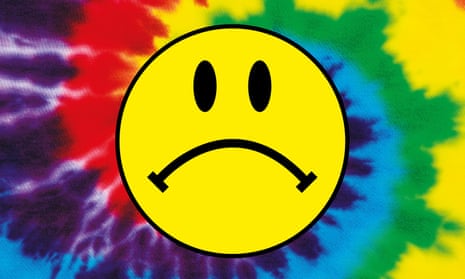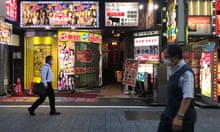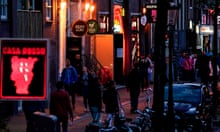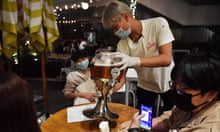When Daisy Nook started trending on Twitter on the evening of 13 June, many users of the site thought it was a reference to the popular video game Animal Crossing, which features characters called Daisy and Nook. But Paul Carroll knew better. The 59-year-old police trainer had seen the saucer-eyed teenage girls and lads swigging from cans of beer flooding into Daisy Nook country park, in Greater Manchester, as he took his dogs for a walk that evening. Carroll stared at the revellers in astonishment. Illegal raves simply do not happen in Daisy Nook.
It was not a restful evening. The traffic outside Carroll’s house was relentless, as was the whoosh of the nitrous oxide balloons the young people were huffing as they marched through the country park to the rave site, an empty field accessible from a canal path. Just after midnight, Carroll found a group of young men urinating on his garden wall. Insults were exchanged. “I wasn’t scared,” Carroll says. “I would have given as good as I’d got!” He backtracks. “Well, there were seven of them and I hadn’t got any shoes on.” After that encounter, Carroll’s wife told him to stop going outside. But he couldn’t sleep, so Carroll sat and watching the road, enraged. More cars. More balloons. Whoosh. Whoosh. Whoosh.
About 4,000 people raved in Daisy Nook that night. Meanwhile, another 2,000 people attended a “quarantine rave” in Carrington, 15 miles away. Similar raves have popped up throughout June. Staffordshire: 1,000 people raved in Brookhay Woods, near Lichfield. Liverpool: hundreds of revellers danced to house music in a forest near Kirkby. Bristol: 1,000 people gathered in Stokes Croft. Leeds: police shut down a rave in an underpass of the M1 motorway as shocked motorists watched participants flood on to the road; one clubber Vogued his way down the hard shoulder. Manchester: hundreds gathered in a courtyard in Moss Side. The DJ kept shouting: “Welcome to Manchester.”
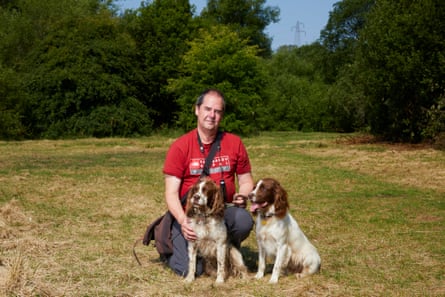
Across the country, young people are ignoring lockdown, strapping on bumbags and making for woods and fields. With the coronavirus pandemic having closed bars and clubs and cancelled or postponed festivals, raves are sweeping the UK, just as they did during the “second summer of love” in 1988, when acid house swept the country and ecstasy and bucket hats were everywhere.
But some of those who were around for the summer of rave in 1988 say the comparison ends there. Those raves were “about everyone coming together”, says Alon Shulman, the author of The Second Summer of Love: How Dance Music Took Over the World. “If we’re putting vulnerable people at risk due to coronavirus, that’s not in the spirit of the summer of love.” Sacha Lord, Greater Manchester’s night-time economy adviser – and the owner of the club The Warehouse Project – quickly condemned the ravers in Carrington and Daisy Nook. “You aren’t clubbers, just selfish idiots,” he tweeted.
Hanging over these parties are the fears that such mass gatherings could lead to a second wave of coronavirus infections. “The idea that: ‘Yay, this is over, let’s celebrate,’ is very premature,” says Dr Stephen Griffin, a virologist at the University of Leeds. “The prevalence of coronavirus is not nearly down far enough. This has not gone away yet.” Griffin points to recent figures from the Office for National Statistics that show that the decline in new Covid-19 cases has levelled off; he says this, plus the absence of an established testing system, is deeply concerning.
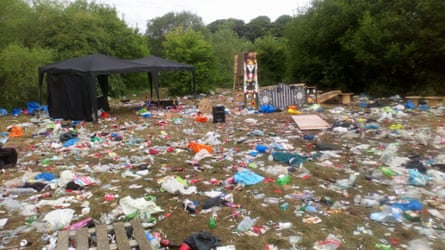
“Raves are a bad idea, even if they are outdoors,” Griffin says. “It’s a myth to say you can’t spread coronavirus in the open air. You’re exerting yourself, meaning that you have a higher respiration rate; you’re in close proximity and you may have been taking drugs or drinking alcohol, meaning your awareness of physical distancing will be reduced.”
The artist Jeremy Deller, whose rave documentary Everybody in the Place showcased the explosion of acid house, is more sanguine. “I think young people always want to be involved in illegal activity,” he says. “It’s a rite of passage.” However, he suggests that young ravers take a leaf out of the electronic music duo Altern-8’s book; they wore chemical warfare suits and gas masks to DJ. “Thirty years ahead of their time,” Deller jokes.
With the stakes so high, history may not be kind to these young ravers. “Perhaps, in 20 years’ time, people will turn around and say: ‘I went to a rave during the coronavirus pandemic,’ says Shulman. “Some people will say: ‘Amazing!’ and others will say: ‘You idiot. You’re the reason it went on for another six months.’”
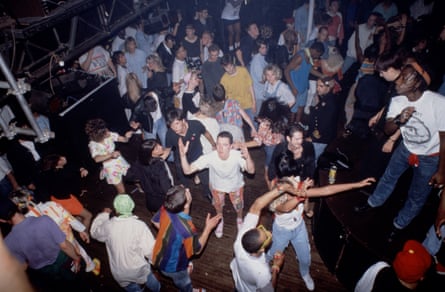
Finding these parties is simple: Instagram pages with names such as “Secret Forest Rave” or “Secret Quarantine Rave” link to Snapchat accounts, where locations are shared an hour before the event. Other raves are organised via WhatsApp groups. What is more difficult is getting illegal ravers to talk to me. Ravers who break the omertà can be blacklisted from future events – a risk many don’t want to take when they are facing a summer of cancelled plans. So, young people who hours before posted videos to their social media accounts of themselves dancing in a packed field tell me that I have the wrong person, or feign ignorance. “Jog on,” writes one. “Leg it, ya grass,” says another.
Like almost everyone else, Matty, a 25-year-old factory worker from Liverpool, tells me to get lost when I reach out. But then he softens and we end up talking via Facebook Messenger for hours. He attended the Kirkby rave on 5 June, because the promoters were friends of his. “We just wanted to relieve some stress, not cause any trouble or spread viruses or anything like that,” he says. The organisers had not expected so many people to come, but word got out – Matty does not know how many people turned up, but he guesses thousands, all desperate to blow off some steam. “Anyone aged 18 to 30 is craving a festival or a holiday 1,009%,” he says.
Illegal raves are popping up faster than velvety mammals in a game of whack-a-mole. “Every time I look at Instagram I see another 10 raves being organised,” says Matty. “It’s going to get so much worse.” Supt Jonathan Davies of Merseyside police, which disrupted the Kirkby rave, says his force has attended four raves this month alone. “They are cropping up very fast,” he says. “It’s a national issue. All the forces are flagging them up. They are gathering momentum.”
Young people were obeying the lockdown rules – until suddenly they were not. “The raves started to boom about a month after lockdown, once most people realised they weren’t going to get sick,” says Matty. Penny, a 27-year-old performer from London, recently went to an illegal rave in Hackney, east London. “A month ago, people would have said: ‘No you can’t go partying, that’s awful!’ But the way it’s been handled by the government, now we have a different perspective. They’ve given us such mixed messages all the way through … Boris Johnson wanted herd immunity, didn’t he? He’s achieved that, by being so wishy-washy about the whole thing.”
The rave Penny attended was held in some artists’ studios; she spent the evening banging a drum she found on the dancefloor and doing tarot readings for guests. “There was a postapocalyptic, glamorous vibe,” she says. “I really enjoyed it. Everyone was in the moment, dancing.”
Davies says that some commercialised illegal raves – at which you have to pay for entry – have links to organised crime. “This looks like a group of people involved in criminality who’ve decided to start doing raves, charging £10 a head, and they are relentless. The same people are planning further events.” Greater Manchester police have issued a similar warning, stating that several of the 13 illegal raves they have stopped in recent weeks had links to organised crime, specifically the gangs that control the drug supply to the north-west of England.
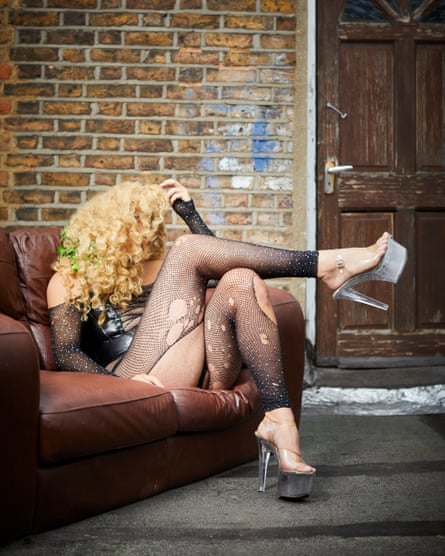
But enthusiastic amateurs are also getting in on the act. “I’m not a criminal or nothing,” insists Andy when I call him. “I didn’t think it would be as big as it was. It just snowballed.” Andy, who is in his early 20s and lives in Yorkshire, recently organised a rave for 400 people in some woods near Manchester (doing it closer to home seemed too risky). “It was banging,” he says. “I think everyone was just chuffed to be out the house. Everyone was off their heads, like, obviously.”
These young ravers are unrepentant about breaking lockdown. “No one is physical distancing,” says Penny. “There’s a sense of nihilism now, like: whatever will be, will be.” Penny sees people in shops and in parks; none of them are physically distancing, so why should she? Andy says the same was true at his rave. “Everyone was sweating and dancing together,” he says. “There was no two metres or anything like that.” In any case, says Andy, “the rules don’t make sense. You can’t go see your nana, but you can go to Primark? People are thinking: if you can go to Primark and buy yourself some thongs for a quid, you can go get some Es and get down a field and get out of your head.”
It is not hard to see why illegal raves can act as a pressure valve for young people who have spent months indoors, away from their friends, schools, colleges or workplaces. “People feel trapped at the moment,” says Matty. “No one is on holiday. No one is at festivals. Nothing is open for the youth.”
But it is more than that. For young people who have experienced only a commercialised club scene, illegal raves feel like discovering dance music in Technicolor. “Everything has got so commercial,” says Andy. “There was none of that. You could just do what you wanted.”
“It feels like the 80s, like the resurgence of acid house,” says Katie, 23, who works in the music industry. She attended an illegal house music rave in woodland near Glasgow. “We had lockdown and now this is coming out of it … I think there will definitely be more and more raves throughout this summer.”

Katie wore a face mask to her rave, but most people did not. A recent investigation by Vice into an illegal indoor rave found that clubbers had their temperatures taken on entry, as a precaution against coronavirus, but this was not the case at the rave Penny went to, which was held indoors. “If I was responsible for someone’s death, that would be awful,” she says.
Spreading coronavirus is not the only thing that makes these raves so dangerous. At Daisy Nook, a 20-year-old man died of a drug overdose. In Carrington, three men were stabbed and a woman was raped. A girl was burned at the Kirkby rave. Two people were fatally shot at the Moss Side party. “These are dangerous places,” says Davies. “They tend to be derelict, there’s lots of water and electricity and they are isolated.”
Even if you escape injury, rave-going can be a logistical nightmare. It took Katie and her friends hours to get home, after they persuaded a stranger who was camping nearby to give them a lift. “I did feel completely safe, but I definitely wouldn’t go alone as a woman,” says Katie.
Yet, after so many months spent indoors, going out has never tasted so good. “It felt so lovely to let go for the night when everything is going crazy in the world,” says Katie. “And because it was risky, it gave you that extra bit of adrenaline.” Part of the thrill, too, is knowing that you got away with it. “Ah, mate,” whistles Andy. “It was a rush. We were proper buzzing all the way home.” They continued the party into Sunday daytime. Thankfully, Andy, who is a key worker, had taken Monday off.
Promoters who don’t want their parties shut down by police should minimise the non-coronavirus risks. “Put security there,” Davies says. “Have adequate lighting. Don’t have your generator in a pool of water.” Although these raves are illegal under the Criminal Justice Act 2003 and the Coronavirus Act 2020, police can exercise discretion when it comes to enforcing the legislation. “If we came across one that we deemed to be safe and there was no risk there, why would we cause the disruption to close it down?” says Davies.
But what about when the party ends? Andy and his friends were in such a rush to get away from the site before police caught them that they did not clean up. “We tried our best,” he says, sounding sheepish. “But when it’s 6am and the sun’s coming up, and you’ve been up all night, you just want to get out of there.” Shulman is disapproving. “You’d never have had rubbish on the ground back in the day,” he says. “People were respectful.”
It took 40 volunteers nine hours and 400 bin bags to clean up the devastation in Daisy Nook. Sandra Lord, a receptionist, was one of them. “It looked like a war zone,” she says, sighing. The promoters even left behind their equipment: having made £40,000 on £10-a-head tickets, Lord guesses that they did not fancy carrying it back up the hill. “I found used tampons, sanitary towels, faeces, wipes everywhere,” Lord says. Carroll’s neighbour found a used tampon in his hedge. Worse still were the thousands of discharged nitrous oxide gas canisters, which are made of metal and can be fatal to birds and other wildlife. “It was a sea of silver,” Lord says. “I couldn’t even guess how many of them I picked up. Thousands and thousands.”Despite the stakes for public health being so high, it is clear that something is catalysing in teenage bedrooms that were previously heavy with ennui: a second summer of rave, held in the squelching fields, tangled hedgerows and damp forests of Britain. Katie remembers looking up at the lights on the trees while dancing in the woodland near Glasgow. She says: “I had this feeling of: wow, people really will go far for a party, won’t they?”
Some names have been changed
